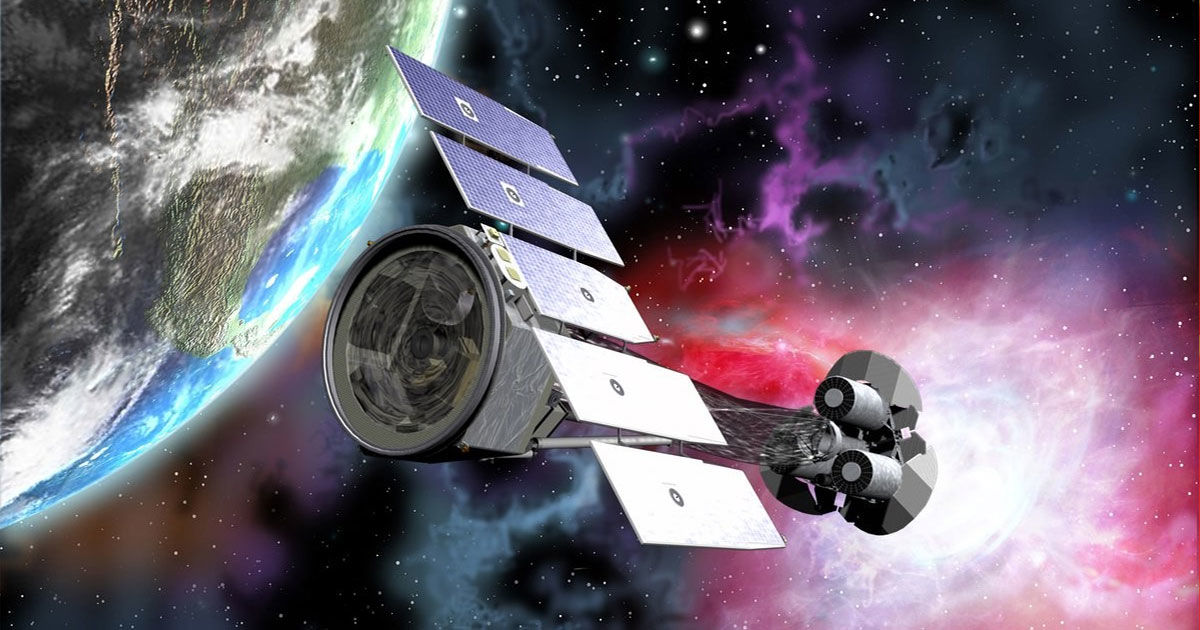 It’s full speed ahead for the NASA mission involving the IXPE satellite (Imaging X-Ray Polarimetry Explorer), a mission that has the ambitious task of opening a new window into polarimetry X-ray astronomy. This promises to provide new and important information on the emission mechanisms and geometry of compact objects, such as neutron stars, and on the configuration of magnetic fields at the sites of celestial X-ray sources. In recent days, the rigorous testing of the satellite equipment was successfully completed, and the American space agency has now officially announced that the launch vehicle, that will take the IXPE into orbit, will be one of the private company SpaceX’s Falcon-9s. The very high technological level of the detectors that Ialy is providing for the mission will allow the IXPE to implement a scientific programme typical of bigger missions, as confirmed by the NASA board that selected it. The board has, in fact, promoted it from a Small Explorer programme (SMEX) to a Medium-Class Explorers (MIDEX) programme. The most significant Italian contributions are those of the National Institute for Astrophysics (INAF), the National Institute for Nuclear Physics (INFN), and the Italian Space Agency (ASI).
It’s full speed ahead for the NASA mission involving the IXPE satellite (Imaging X-Ray Polarimetry Explorer), a mission that has the ambitious task of opening a new window into polarimetry X-ray astronomy. This promises to provide new and important information on the emission mechanisms and geometry of compact objects, such as neutron stars, and on the configuration of magnetic fields at the sites of celestial X-ray sources. In recent days, the rigorous testing of the satellite equipment was successfully completed, and the American space agency has now officially announced that the launch vehicle, that will take the IXPE into orbit, will be one of the private company SpaceX’s Falcon-9s. The very high technological level of the detectors that Ialy is providing for the mission will allow the IXPE to implement a scientific programme typical of bigger missions, as confirmed by the NASA board that selected it. The board has, in fact, promoted it from a Small Explorer programme (SMEX) to a Medium-Class Explorers (MIDEX) programme. The most significant Italian contributions are those of the National Institute for Astrophysics (INAF), the National Institute for Nuclear Physics (INFN), and the Italian Space Agency (ASI).Archive News & Press Release
IXPE - Flying with a Falcon to Observe the Universe in X-rays
 It’s full speed ahead for the NASA mission involving the IXPE satellite (Imaging X-Ray Polarimetry Explorer), a mission that has the ambitious task of opening a new window into polarimetry X-ray astronomy. This promises to provide new and important information on the emission mechanisms and geometry of compact objects, such as neutron stars, and on the configuration of magnetic fields at the sites of celestial X-ray sources. In recent days, the rigorous testing of the satellite equipment was successfully completed, and the American space agency has now officially announced that the launch vehicle, that will take the IXPE into orbit, will be one of the private company SpaceX’s Falcon-9s. The very high technological level of the detectors that Ialy is providing for the mission will allow the IXPE to implement a scientific programme typical of bigger missions, as confirmed by the NASA board that selected it. The board has, in fact, promoted it from a Small Explorer programme (SMEX) to a Medium-Class Explorers (MIDEX) programme. The most significant Italian contributions are those of the National Institute for Astrophysics (INAF), the National Institute for Nuclear Physics (INFN), and the Italian Space Agency (ASI).
It’s full speed ahead for the NASA mission involving the IXPE satellite (Imaging X-Ray Polarimetry Explorer), a mission that has the ambitious task of opening a new window into polarimetry X-ray astronomy. This promises to provide new and important information on the emission mechanisms and geometry of compact objects, such as neutron stars, and on the configuration of magnetic fields at the sites of celestial X-ray sources. In recent days, the rigorous testing of the satellite equipment was successfully completed, and the American space agency has now officially announced that the launch vehicle, that will take the IXPE into orbit, will be one of the private company SpaceX’s Falcon-9s. The very high technological level of the detectors that Ialy is providing for the mission will allow the IXPE to implement a scientific programme typical of bigger missions, as confirmed by the NASA board that selected it. The board has, in fact, promoted it from a Small Explorer programme (SMEX) to a Medium-Class Explorers (MIDEX) programme. The most significant Italian contributions are those of the National Institute for Astrophysics (INAF), the National Institute for Nuclear Physics (INFN), and the Italian Space Agency (ASI).





